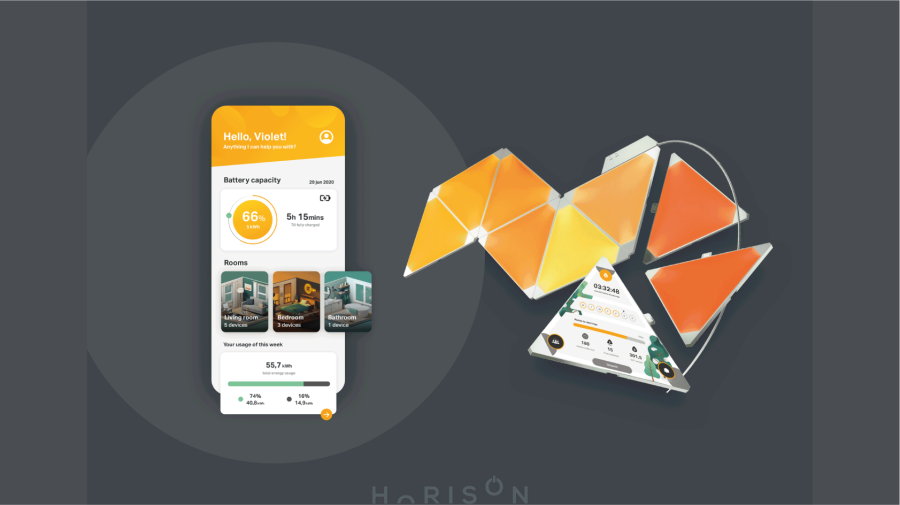Student: Violet Jim
Study: Minor User Experience Design
In May 2020 Students of the minor User Experience Design were involved in a Circulate student project. They were asked to engage a fictional community in balancing energy usage and production by visualising the (private and collective) usage and availability of energy.
In creating this visualisation (in the shape of an interface or dashboard) the students were asked to specifically consider the dilemma of privacy vs. transparency: which information should be collectively shared and which should be kept to individual families? What are the implications of the design decisions made? What are the ethical considerations made?
The product
Horison focuses on promoting sustainable living by reducing energy usage and promoting green energy. The product consists of an app and a dashboard, based on Nanoleaf technology. Nanoleafs are smart, modular light panels which can be customised, expanded upon and placed throughout the home. By incorporating a dashboard within the Nanoleaf lighting technology the product provides a direct link to energy usage within the house in terms of lighting. The app provides more in-depth insights and allows users to manage their energy usage.


Featured dilemmas
Privacy vs. Transparency
Transparentisation can help to identify who contributes the most to the common goals or who uses more resources, so that the community can decide to reward/recognize the contributors and penalize excessive users or free riders. This visibility also provides an accountability for the governance rules of the commons: Each member can assess if they are treated fairly according to their contribution level. However, it is also relatively easy for individual concerns to become visible to everyone. Even if the members of a closed community are okay to share these details with each other, it may become problematic when third party software would be attached to their system.
By conducting interviews, the designer discovered that her target group was relatively privacy minded: they preferred not to have their personal usage insights shared with the community. The product therefore has two views, the first presenting detailed insights specific to the household (invisible to the community) and the second presenting community aggregates.
Incentivisation vs. Manipulation
Incentives, in general, give people some sense of agency, yet at the same time they can be conditioned or coerced by these systems into particular behavior and nudged to conformity with collectively set norms.
The product makes heavy use of incentivisation principles in order to motivate participants to save energy, both on a personal level as well as a community level.
Design decisions
Since the designers target audience is relatively privacy minded, she decided to only show insights for user’s own houses and for the community as a whole. Individual usage of other households within the community can’t be seen.
On a personal level, users will receive tips for saving on their energy usage. The app also makes use of gamification techniques to motivate users to save energy: users can gain achievements and complete streaks.
On a community level, users are encouraged to share energy through showing community statistics, the use of incentivisation methods like points and financial rewards and the usage of altruistic goals such as planting trees every time the community saves CO2.


The final product
This project was nominated for the HVA’s golden dot awards 2020 a competition for best student projects of the year within communication and media design.
